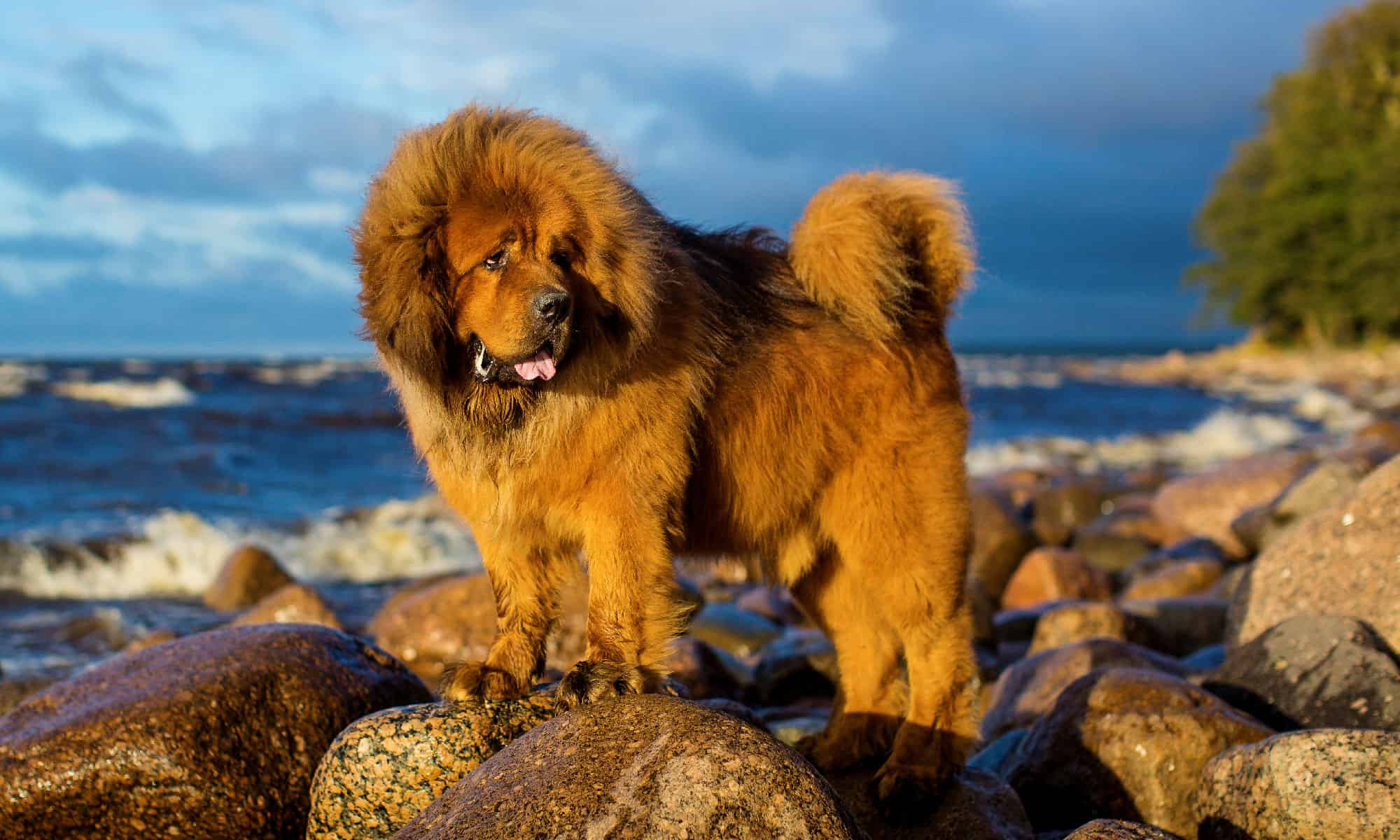Dignified, brave, and calm – mastiffs are gentle giants. This classic guardian breed is known for its loyalty and devotion to its owners. Mastiffs can weigh up to 230 pounds and stand up to 36 inches tall at the shoulder. Their regal demeanor is a far cry from their mild temperament.
Many ancient people bred mastiffs as war dogs to fight alongside soldiers on the battlefield. Later, they became guard dogs for estates and farm animals. Today, they are companions and family pets.
These gentle giants come in a range of colors. From the rarest to the most common, each hue tells a unique story.
Mastiff Colors: From the Rarest to the Most Common
1. Láng qù ing
Tibetan mastiffs have a special gray-blue coat color called láng qù ing or blue fawn. It is very rare and mostly found in Tibet.
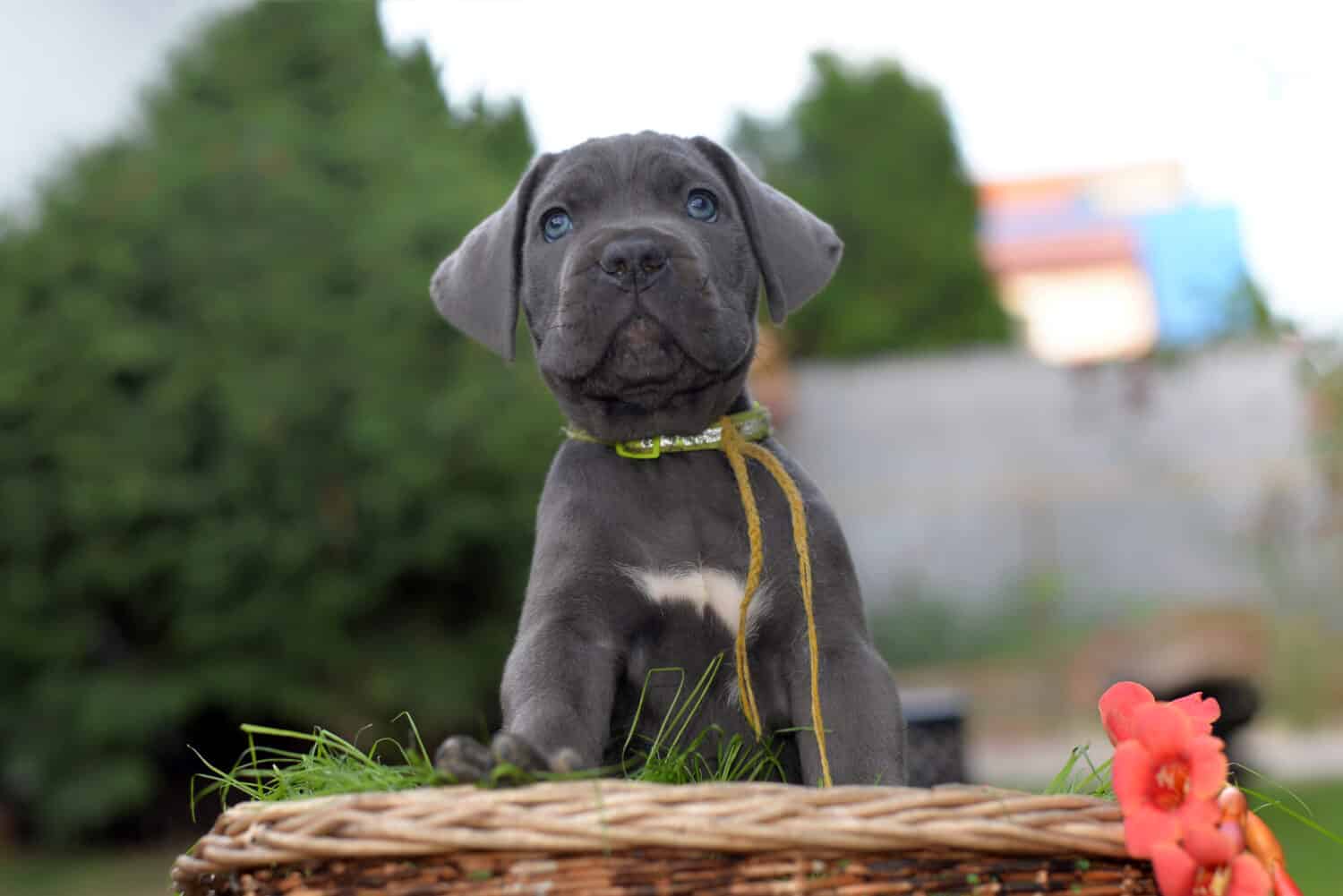
Láng qù ing is a rare and captivating hue.
©goja1/Shutterstock.com
The color of a Láng qù ing mastiff’s coat is determined by genes, like MC1R. This affects the shades of gray, blue, and brindle in their fur.
2. Merle
The merle coat color is quite rare among mastiffs. This adds to its allure and desirability. Merle mastiffs exhibit patches and streaks of various shades.

The Merle gene produces patches and streaks of various shades
©RAM 316 Works/Shutterstock.com
Merle mastiffs are dogs with a beautiful coat that has blue, gray, black, and tan colors. Each dog is unique in the pattern and intensity of their coat. Responsible breeding is important to reduce health risks for the puppies, but merle dogs still have some health issues.
Responsible breeding minimizes potential health risks in pups, but merle dogs almost always have health problems. The same mechanism that makes their coat color also leads to deafness and blindness. You can’t have one without the other.
3. Blue
Mastiffs with blue coats are rare because of a gene that changes their black pigment, making them more “blue” than black.

Blue mastiffs are among the rarest colors.
©goja1/Shutterstock.com
Blue-colored mastiffs are highly-sought after for their unique appearance and rarity. Their eye-catching appearance makes them a popular choice for show competitions. They also make good family pets. However, this color may be susceptible to health issues. This may have nothing to do with the color itself. Instead, it may be due to the inbreeding needed to make this color happen.
4. Silver
Silver color in mastiff breeds is determined by genetics. A mastiff with a grayish-silver coat, black nose, and eyes is considered silver-colored.
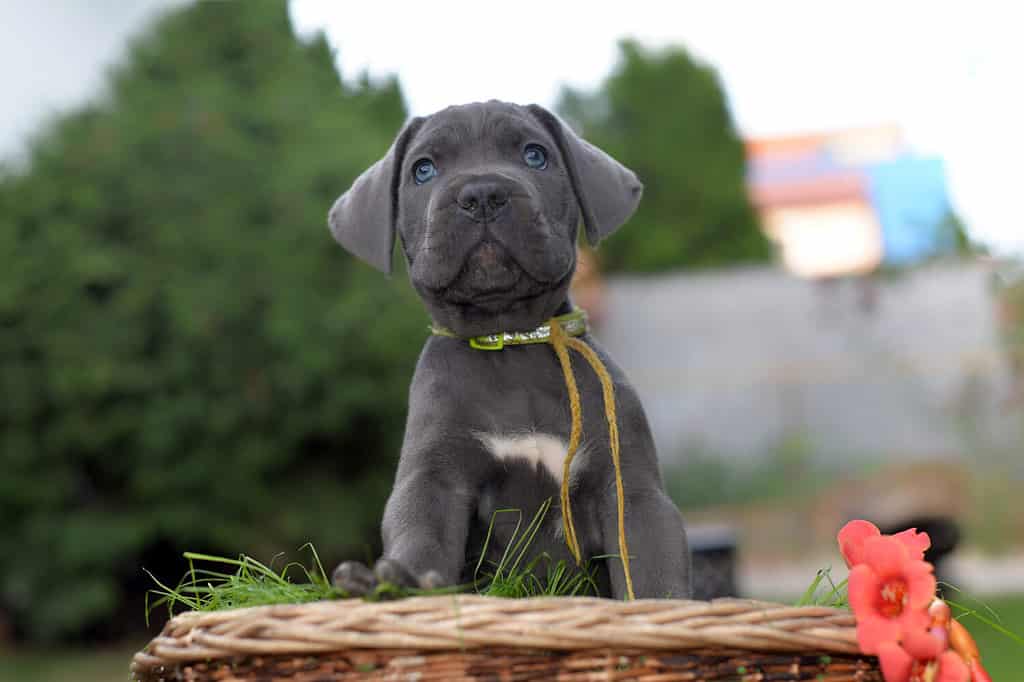
Silver mastiffs have grayish appearance.
©goja1/Shutterstock.com
Silver mastiffs have a grayish appearance due to genetic factors that dilute the color of their coat. These dogs enjoy good health, but coat maintenance and sun protection are important.
5. Isabella
Isabella is light brown with a blue-gray tint that looks similar to lilac.

This coloration is a combination of homozygous brown and homozygous blue.
©Kev Gregory/Shutterstock.com
Did you know that some black dogs can turn into blue ones and liver-colored dogs into a unique Isabella shade? This is due to a dilution gene that some dogs carry. However, for Isabella offspring to be produced, both parents must carry the necessary gene.
The color is common in breeds like the Neapolitan mastiff, cane corso, and the Dogue de Bordeaux. Yet, Isabella Mastiffs are still considered rare within these breeds. All the genetics have to line up correctly, which can be hard to do.
6. Piebald
Piebald refers to a distinct pattern of irregular patches of color on a white background. These spots are random and asymmetric. They can be black, brindle, or fawn.

Piebald refers to a distinct pattern of irregular patches of color on a white background.
©Spockfoundwaldo/Shutterstock.com
Mastiff enthusiasts appreciate the unique and eye-catching appearance of this rare color, which is popular in breeds like the English mastiff and bullmastiff. The piebald coat color adds flair and individuality to the breed’s broad spectrum of coat colors.
7. Liver
Also known as chocolate, liver ranges in hue from a light brown to a deep dark chocolate brown coat. The Labrador Retriever and Weimaraner are other common liver-colored dog breeds.
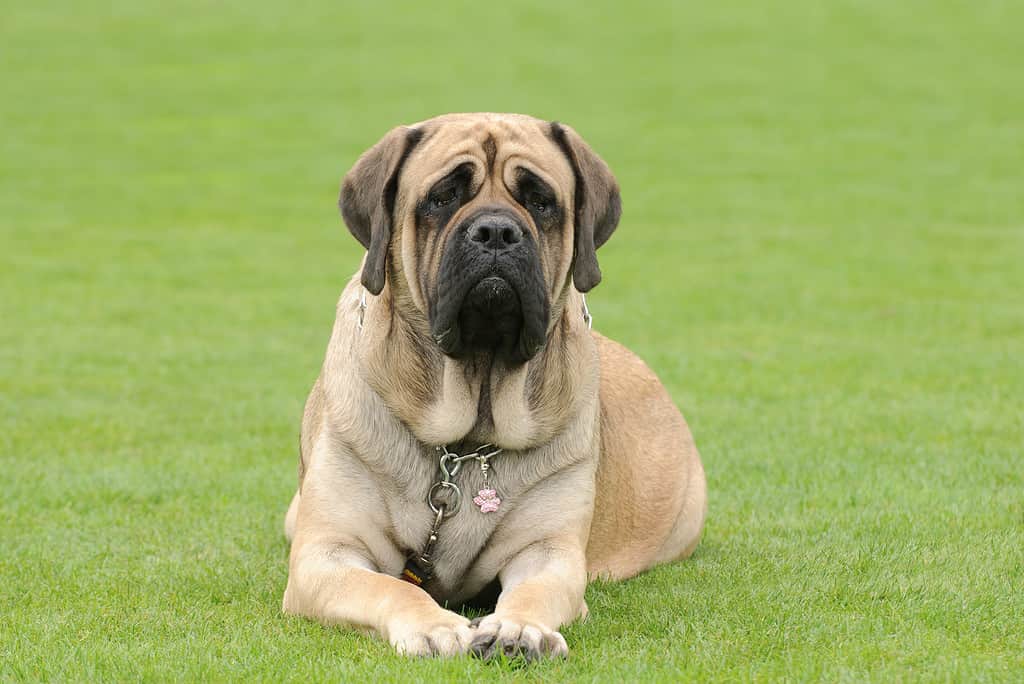
Liver ranges in hue from a light brown to a deep dark chocolate brown coat.
©Waldemar Dabrowski/Shutterstock.com
The liver hue results from the occurrence of a recessive gene called the “dilution gene.” This gene affects eumelanin production, the pigment responsible for coat color.
When pups inherit two copies of this dilution gene, the coat becomes a rich reddish-brown shade – liver.
8. White
White mastiffs have a coat devoid of pigmentation. This is a result of genes responsible for the production and distribution of melanin. These genes are lacking in white mastiffs.
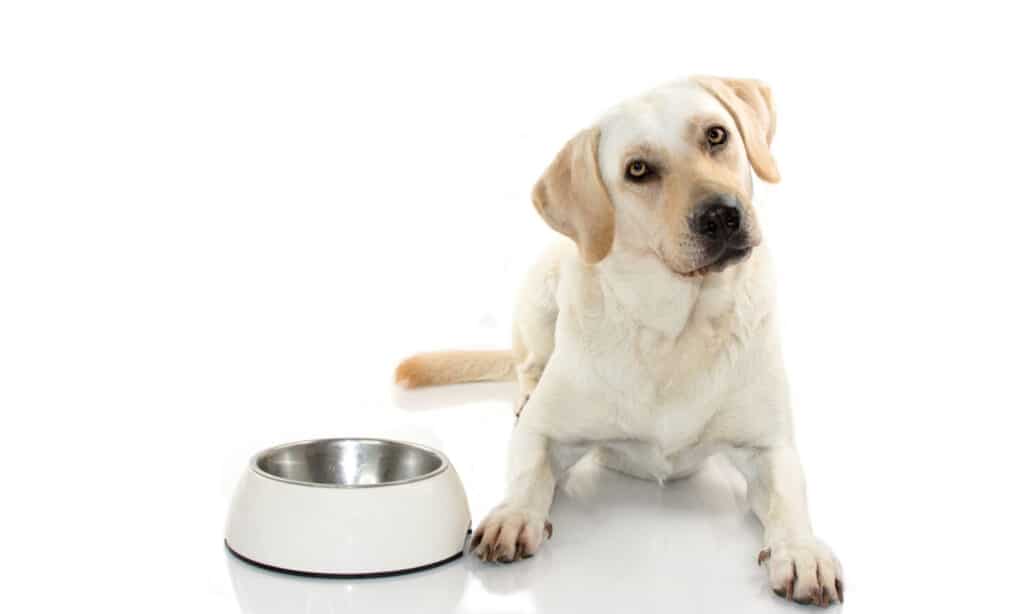
White mastiffs have a coat devoid of pigmentation.
©iStock.com/smrm1977
The lack of melanin in the coat gives rise to the pure and striking white coat color. The same genes vary among individual dogs and breeding lines. Some may have a solid white coat with a few spots or markings.
Other white coat color breeds include Great Danes, Samoyeds, and Great Pyrenees. White-coated mastiffs need extra care in the sun. This is due to their lack of pigment, which makes them more susceptible to sunburn.
9. Black
Black mastiffs look great due to the high production of eumelanin, which creates the rich, dark color of their coat.
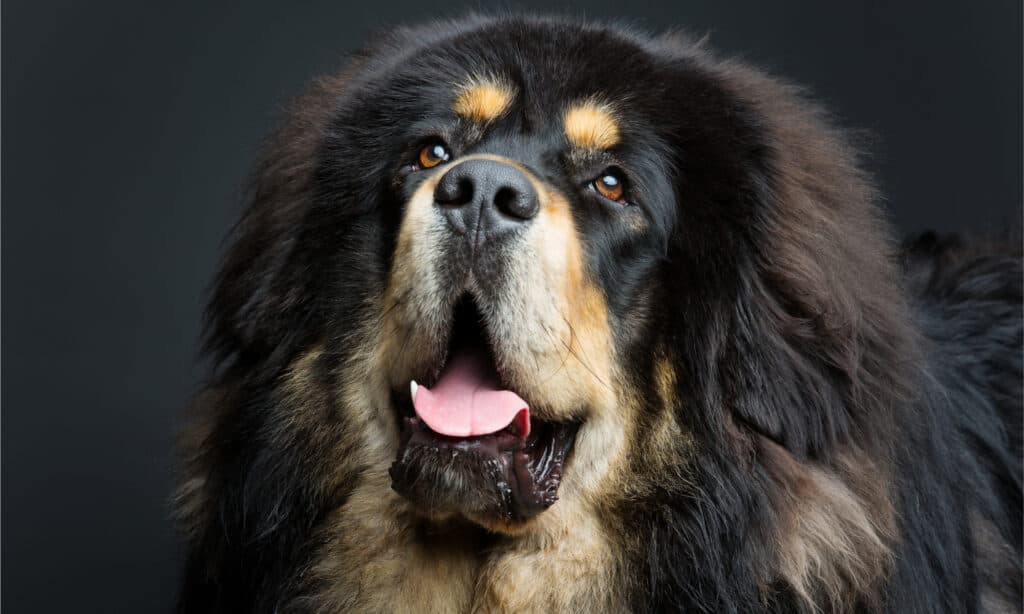
The black color comes about through the increased production of eumelanin.
©Svetography/Shutterstock.com
10. Mahogany
Mahogany-colored mastiffs have a deep reddish-brown coat. Some have black masks or markings. Specific genetic factors control the production and distribution of pigments responsible for coloration.
Variations in these genes lead to different levels of melanin production and distribution. Their interaction determines the specific shade and intensity of the mahogany coat color.
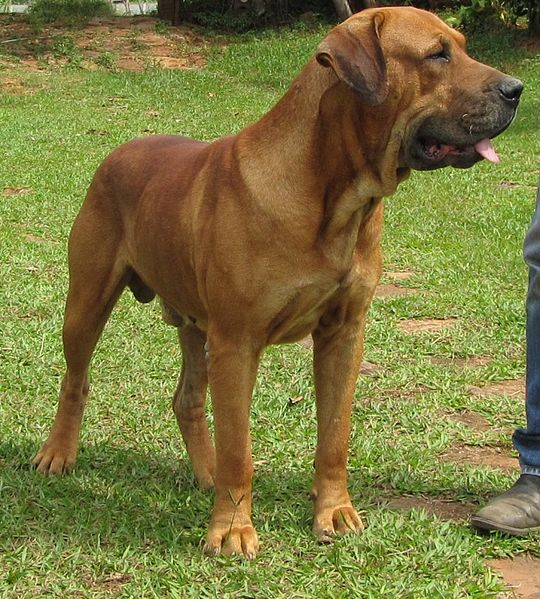
Mahogany-colored mastiffs have a deep reddish-brown coat.
©Rondon / Public Domain, Wikimedia Commons – Original / License
Breeders who aim to produce mahogany mastiff puppies select specific alleles. These specific combinations result in the desired coat color. Genetic testing and pedigree analysis ensure consistent production of mahogany mastiffs.
11. Red
The history of red-coated mastiffs traces back centuries. Their value comes from their aesthetic appeal, strength, and loyalty. This explains why the most expensive dog is a red Tibetan mastiff. Sold for £945,000 ($1,513,417).

In red mastiffs, phaeomelanin is higher than eumelanin.
©iStock.com/Bigandt_Photography
The deep reddish-brown coat is determined by the genetic makeup of these animals. The inheritance pattern of the red coat color is complex and involves the interaction of two genes – Phaeomelanin, which produces red and yellow pigments, and eumelanin, which produces black and brown pigments.
Red mastiffs have a lot of red pigment called phaeomelanin in their fur. This makes them look reddish. The way genes work can cause different shades of red in different mastiffs. This makes them unique.
Irish setters, Rhodesian ridgebacks, and vizslas are also red-coat breeds. Red mastiffs may be more prone to skin issues or sensitivities. They need diligent care and monitoring, as they may have a higher inbreeding coefficient.
12. Brindle
Brindle is a somewhat common color in mastiffs. It blends brown and black stripes on a light brown or tan background. The mastiff community appreciates brindle mastiffs for their unique and beautiful markings.
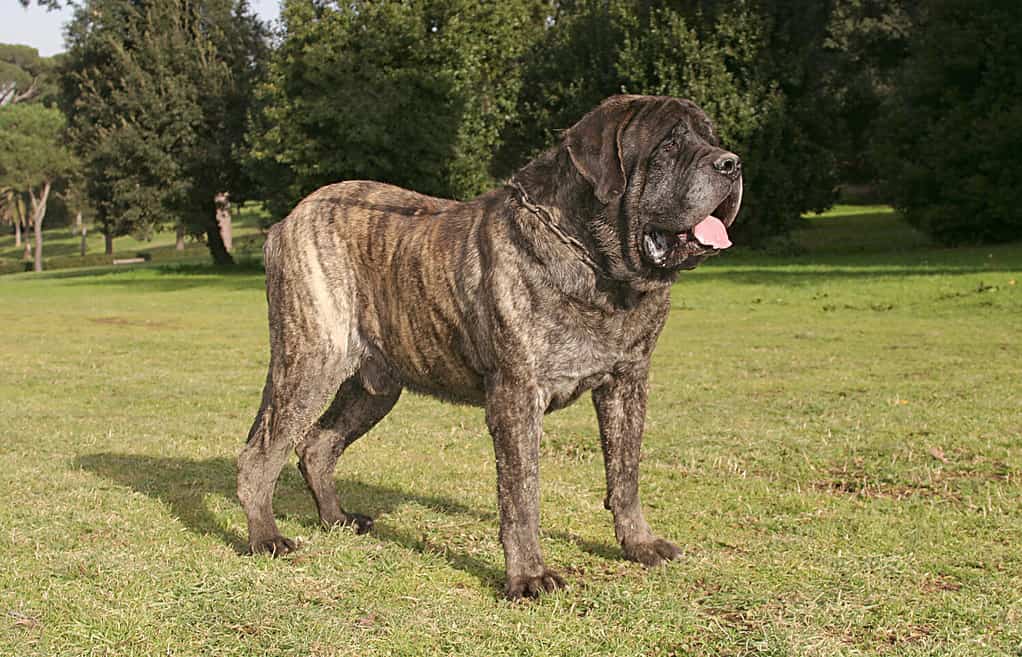
Brindle blends brown and black stripes on a light brown or tan background.
©Ricantimages/Shutterstock.com
The stripes on a brindle mastiff vary in thickness and darkness. As a result, it creates a distinctive pattern of dark stripes on a lighter background. The base coat color is often brown or gray.
Brindle mastiffs have a striking and eye-catching tiger-like appearance. This makes them stand out. The brindle patterning is not exclusive to mastiffs. Other breeds like boxers, greyhounds, and bulldogs showcase this coloration.
13. Apricot
Apricots display a lighter shade of fawn with pinkish tones, a gentle orange or light reddish hue. Although less common as fawn, this coloration has gained popularity in mastiff communities.
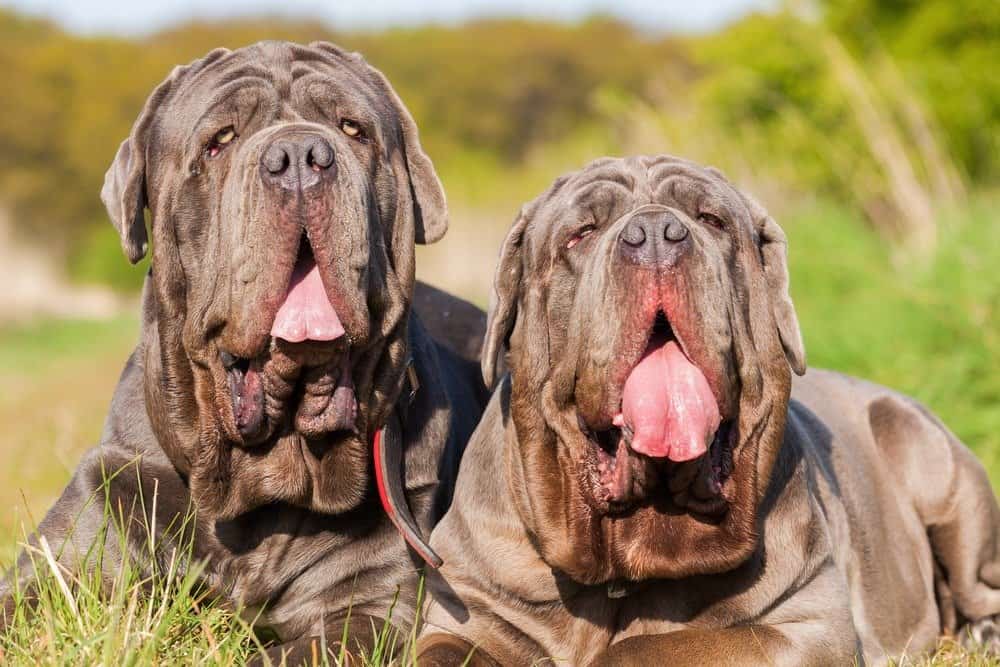
Apricots display a lighter shade of fawn with pinkish tones, a gentle orange or light reddish hue.
©Christian Mueller/Shutterstock.com
In apricot mastiffs, there is an increased expression of phaeomelanin. This is the pigment responsible for red and yellow tones. Pups inherit the genetic code for the apricot color from their parents. So, breeders must select and pair desired genetic traits to produce this color offspring.
Apricot mastiffs are generally considered healthy. There are no specific medical risks or advantages associated with the coat color.
14. Fawn
Fawn-colored mastiffs exude a solid light brown coat. They may have black masks or markings. This classic hue is the most prevalent but is still cherished.

Fawn-colored mastiffs are the most common.
©Pavel Shlykov/Shutterstock.com
Fawn mastiffs are a popular choice among breeders and enthusiasts because they are typically free of genetic issues. Their light-colored coats make it easy to spot any skin problems.
Summary of Mastiff Colors: Rarest to Most Common
| Color | Prevalence Rate |
|---|---|
| Láng qù ing | Very low |
| Merle | Very low |
| Blue | Relatively low |
| Silver | Relatively low |
| Isabella | Relatively low |
| Piebald | Relatively low |
| Liver | Low |
| White | Low |
| Black | Low |
| Mahogany | Low |
| Red | Low |
| Brindle | High |
| Apricot | High |
| Fawn | Very high |
Ready to discover the top 10 cutest dog breeds in the entire world?
How about the fastest dogs, the largest dogs and those that are -- quite frankly -- just the kindest dogs on the planet? Each day, AZ Animals sends out lists just like this to our thousands of email subscribers. And the best part? It's FREE. Join today by entering your email below.
Thank you for reading! Have some feedback for us? Contact the AZ Animals editorial team.

